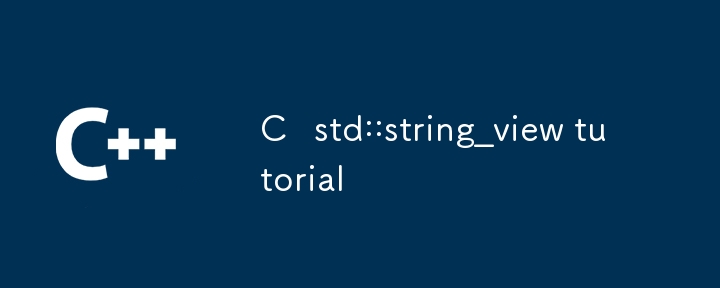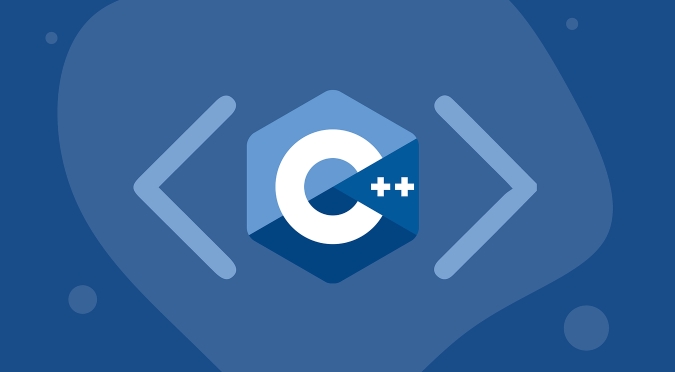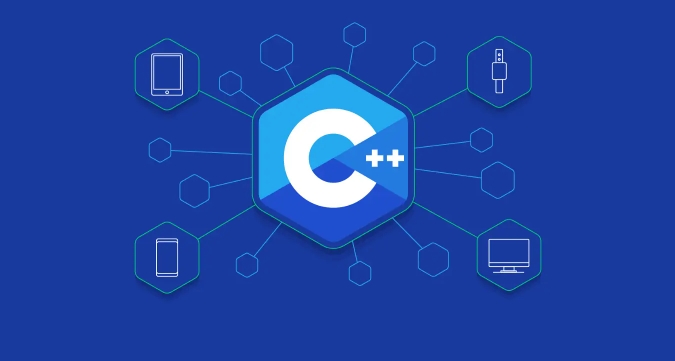std::string_view is a lightweight class in C used to view existing string content, and does not copy or own memory. 1. Replace const std::string& as a function parameter to avoid copying; 2. Support efficient operations such as substr and find; 3. Pay attention to issues such as hanging references, non-modification, and literal length when using them; 4. Applicable to log parsing, performance-sensitive scenarios and general string processing functions.

Using C's std::string_view is actually quite simple. It's just that you "see" the string content without copying it. This is especially useful in handling large numbers of string operations or performance-sensitive scenarios.

What is std::string_view
Simply put, std::string_view is a lightweight string "view" that can point to an existing string (such as const char* or std::string ) but will not own it. You can understand it as a combination of pointer lengths, which makes it very efficient to access.

Common ways to use:
- As a function parameter, instead of
const std::string&to avoid unnecessary copying - Reduce memory allocation when processing string substrings, searching, comparison and other operations
How to use std::string_view to do basic operations
Declare and initialize:

std::string_view sv1 = "hello"; // Point to the literal std::string s = "world"; std::string_view sv2 = s; // Point to the content of string
Common methods:
-
sv.size()gets the length -
sv.empty()determines whether it is empty -
sv.data()gets the underlying character pointer -
sv.substr(pos, len)extracts substring -
sv.find("abc")find content location
For example, extract the domain name part in the URL:
std::string_view url = "https://example.com/path/to/resource";
auto start = url.find("://");
if (start != std::string_view::npos) {
url.remove_prefix(start 3); // Skip the protocol part}
auto slash_pos = url.find('/');
if (slash_pos != std::string_view::npos) {
url = url.substr(0, slash_pos); // Take out the domain name}
// Now url is example.com Notes on using std::string_view
Although it is easy to use, there are some pitfalls to pay attention to:
- Don't save it for too long: because
string_viewis just "looking" on other people's content, and if the original string is released, it becomes a dangling reference. - String literal default length problem: like
std::string_view sv = "hello", it will automatically recognize the length of 5 instead of\0that depends on the end. - Modification problem: You cannot modify the content of
string_viewdirectly, it is read-only (unless you cast it to a non-const pointer, but this is not recommended).
Suggestions for practical application scenarios
- Function parameters are passed : Use
std::string_viewinstead ofconst std::string&to improve efficiency. - Parsing logs, configurations, and text data : can be processed in segments without the need to frequently construct temporary strings.
- Key performance paths : such as network packet parsing and string matching algorithms, memory copy can be significantly reduced.
To give a practical example, write a general string prefix judgment function:
bool starts_with(std::string_view str, std::string_view prefix) {
return str.size() >= prefix.size() &&
str.substr(0, prefix.size()) == prefix;
} Basically that's it. std::string_view is small but practical. The key is to understand that it does not manage memory. Use the right place, the code is simpler and more efficient.
The above is the detailed content of C std::string_view tutorial. For more information, please follow other related articles on the PHP Chinese website!

Hot AI Tools

Undress AI Tool
Undress images for free

Undresser.AI Undress
AI-powered app for creating realistic nude photos

AI Clothes Remover
Online AI tool for removing clothes from photos.

Clothoff.io
AI clothes remover

Video Face Swap
Swap faces in any video effortlessly with our completely free AI face swap tool!

Hot Article

Hot Tools

Notepad++7.3.1
Easy-to-use and free code editor

SublimeText3 Chinese version
Chinese version, very easy to use

Zend Studio 13.0.1
Powerful PHP integrated development environment

Dreamweaver CS6
Visual web development tools

SublimeText3 Mac version
God-level code editing software (SublimeText3)

Hot Topics
 The difference between programming in Java and other languages ??Analysis of the advantages of cross-platform features of Java
May 20, 2025 pm 08:21 PM
The difference between programming in Java and other languages ??Analysis of the advantages of cross-platform features of Java
May 20, 2025 pm 08:21 PM
The main difference between Java and other programming languages ??is its cross-platform feature of "writing at once, running everywhere". 1. The syntax of Java is close to C, but it removes pointer operations that are prone to errors, making it suitable for large enterprise applications. 2. Compared with Python, Java has more advantages in performance and large-scale data processing. The cross-platform advantage of Java stems from the Java virtual machine (JVM), which can run the same bytecode on different platforms, simplifying development and deployment, but be careful to avoid using platform-specific APIs to maintain cross-platformity.
 How to reduce the use of global variables in C?
May 23, 2025 pm 09:03 PM
How to reduce the use of global variables in C?
May 23, 2025 pm 09:03 PM
Reducing the use of global variables in C can be achieved by: 1. Using encapsulation and singleton patterns to hide data and limit instances; 2. Using dependency injection to pass dependencies; 3. Using local static variables to replace global shared data; 4. Reduce the dependence of global variables through namespace and modular organization of code.
 c: What does it mean? Data bit c Median domain definition colon usage
May 23, 2025 pm 08:48 PM
c: What does it mean? Data bit c Median domain definition colon usage
May 23, 2025 pm 08:48 PM
In C, the bit field is a structure member that specifies the number of bits, used to save memory and directly manipulate hardware. Example: structMyStruct{inta:2;intb:5;intc:1;}. The advantage of bit domains is memory savings, but there are cross-platform issues, access restrictions and assignments that require caution. Example of usage: structStateMachine{unsignedintpower:1;unsignedintmode:2;unsignedinterror:1;}. Performance recommendations include arranging bit fields by size, avoiding overuse and adequate testing.
 Usage of ? in c Analysis of three-item operator instance in c
May 23, 2025 pm 09:09 PM
Usage of ? in c Analysis of three-item operator instance in c
May 23, 2025 pm 09:09 PM
The syntax of the trigonometric operator in C is condition?expression1:expression2, which is used to select and execute different expressions according to the condition. 1) Basic usage example: intmax=(x>y)?x:y, used to select the larger value in x and y. 2) Example of nested usage: intresult=(a>0&&b>0)?a b:(a==0||b==0)?a*b:a-b, used to perform different operations according to different conditions. 3) Error handling example: std::stringerrorMessage=(errorCode==0)?"Successful&quo
 Usage of c Typical application scenarios of logical non-operators
May 23, 2025 pm 08:42 PM
Usage of c Typical application scenarios of logical non-operators
May 23, 2025 pm 08:42 PM
The usage of logical non-operator! in C includes: 1) Basic usage: inverse the Boolean value; 2) Conditional judgment: simplify the code, such as checking whether the container is empty; 3) Loop control: processing elements that do not meet the conditions; 4) Function return value processing: determine whether the operation has failed. Pay attention to potential pitfalls such as pointer processing and operator priority when using!, but it can help write more concise and efficient code.
 How to create custom filters for cxImage in Debian
May 16, 2025 pm 08:51 PM
How to create custom filters for cxImage in Debian
May 16, 2025 pm 08:51 PM
Create a custom filter for cxImage in the Debian system. You can use the following steps: Prepare to install the cxImage library: Confirm that the cxImage library is installed. If it has not been installed, please use the following command to install: sudoapt-getupdatesudoapt-getinstalllibcximage-dev Install the development tool: Some development tools need to be installed to compile C/C code: sudoapt-getinstallbuild-essential Write custom filter creation filter code: Create a new C/C file, such as custom_filter.cpp
 How to use the image rotation function of Debian cxImage
May 16, 2025 pm 08:57 PM
How to use the image rotation function of Debian cxImage
May 16, 2025 pm 08:57 PM
In the Debian system, you can follow the following steps: Installing the cxImage library First, make sure you have installed the cxImage library. If it has not been installed, you can install it through the following command: sudoapt-getupdatesudoapt-getinstalllibcximage-dev Write the code Next, write a simple C program to show how to use the cxImage library for image rotation. Here is a sample code: #include#includein
 What is the use of python multi-domain application
May 21, 2025 pm 09:51 PM
What is the use of python multi-domain application
May 21, 2025 pm 09:51 PM
Python is widely used in data science, web development, automation, finance, scientific computing and other fields. 1) Data Science: Use NumPy, Pandas, TensorFlow and other libraries to process data and build models. 2) Web development: Django and Flask frameworks quickly build websites. 3) Automation: Write scripts to automate tasks. 4) Finance: Quantopian and Zipline are used for quantitative transactions. 5) Scientific Computing: SciPy and Matplotlib are used for data analysis and visualization. Python's simplicity and readability make it ideal for multiple fields.






